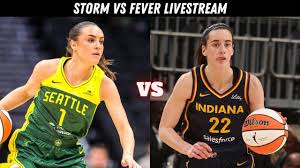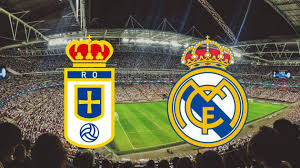
Real Oviedo – Real Madrid
Spanish football is defined by its passion, rivalries, and traditions. While clubs like Real Madrid, Barcelona, and Atlético Madrid dominate international headlines, the fabric of Spanish football is woven by both giants and historic regional clubs. One of those historic names is Real Oviedo, a proud Asturian side with deep traditions.
The fixture Real Oviedo – Real Madrid is not among the most frequent in La Liga history, but whenever these clubs have crossed paths, the games carried weight, history, and symbolism. Real Madrid, the global powerhouse, represents glamour, titles, and dominance, while Real Oviedo embodies resilience, tradition, and regional pride.
This article will explore the story of Real Oviedo vs Real Madrid, diving into their history, memorable matches, cultural significance, and what this matchup means for Spanish football.
1. Introduction to the Clubs
Real Madrid: The Global Giant
Founded in 1902, Real Madrid Club de Fútbol is synonymous with success. With more than 35 La Liga titles, 14 UEFA Champions League trophies, and countless domestic and international honors, Real Madrid is considered the most successful club in football history.
- Stadium: Santiago Bernabéu (Madrid)
- Nicknames: Los Blancos, Los Merengues
- Identity: Glamour, excellence, star power, and dominance
Real Oviedo: The Asturian Pride
Founded in 1926, Real Oviedo comes from Asturias in northern Spain. While they may not have the same glittering trophy cabinet as Real Madrid, their tradition and role in Spanish football are unquestionable. Oviedo has produced top players, endured financial struggles, and experienced the highs and lows of football.
- Stadium: Carlos Tartiere (Oviedo)
- Nicknames: Los Carbayones
- Identity: Community club, history of fighting spirit, and grassroots fan culture
2. The Historical Context of Real Oviedo – Real Madrid
In Spanish football’s early decades, Real Oviedo was more competitive on the national stage, regularly competing in La Liga. Matches against Real Madrid were moments of pride and occasions when Oviedo could test themselves against Spain’s elite.
- 1930s–1950s: Oviedo was a respected top-flight team, often finishing mid-table, while Madrid was rising toward dominance.
- 1960s–1990s: Real Oviedo oscillated between La Liga and Segunda División but always considered games against Madrid as “finals.”
- 2000s–2010s: Financial struggles saw Oviedo drop to the lower divisions, making Madrid encounters rare outside cup fixtures.
- Today: With Oviedo back in the Segunda División and aiming for promotion, fans still dream of regular top-flight clashes with Real Madrid.
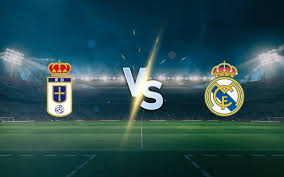
3. Memorable Matches Between Real Oviedo and Real Madrid
Though less frequent today, the Real Oviedo – Real Madrid clashes of the past are filled with memorable stories.
Oviedo 3 – 1 Real Madrid (La Liga, 1991)
One of the most iconic victories for Oviedo. Against a star-studded Madrid side, Oviedo stunned fans with a dominant home performance at the Carlos Tartiere.
- Goals from the Asturian team shook Madrid’s defense.
- The atmosphere in Oviedo was electric, marking it as one of their proudest moments in modern football.
Real Madrid 4 – 0 Oviedo (1993)
Madrid showcased their firepower at the Bernabéu. With players like Butragueño and Hierro, Madrid dismantled Oviedo, underlining the gap between Spain’s footballing elites and regional clubs.
Copa del Rey Encounters
Cup matches between the two sides have been dramatic. While Madrid generally prevails, Oviedo has used these encounters to showcase grit and occasionally push Madrid to the limit.
4. Fan Culture: Los Blancos vs Los Carbayones
Football in Spain is more than sport—it’s identity.
- Real Madrid Fans (Madridistas): A global community, millions strong, with expectations of constant success.
- Real Oviedo Fans: Local, deeply connected to Asturias, and famous for loyalty. During Oviedo’s financial crisis, fans worldwide (including foreign investors) bought shares to save the club.
For Oviedo supporters, hosting Madrid is a festival; for Madrid fans, it’s another chance to witness their team’s dominance.
5. Key Players Across the Years
For Real Madrid
- Raúl González: A symbol of Madrid’s dominance during the 1990s.
- Cristiano Ronaldo: Though he never faced Oviedo in La Liga, his presence symbolizes Madrid’s star power.
- Fernando Hierro: Interestingly, Hierro was an Oviedo player before becoming a Madrid legend.
For Real Oviedo
- Carlos Muñoz: A prolific striker who gave Madrid defenders headaches in the early 1990s.
- Robert Prosinečki: The Croatian maestro played for both Madrid and Oviedo during his career.
- Michu: Though more recent, Michu symbolizes Oviedo’s resilience and their ability to produce top talents.
6. Tactical Styles
- Real Madrid: Known for possession dominance, attacking flair, and star-driven tactics. In modern times, they blend counter-attacks with midfield control.
- Real Oviedo: Traditionally more defensive and resilient, relying on compact formations, teamwork, and set-pieces against stronger opponents.
In direct clashes, Oviedo often plays the role of underdog, sitting deep and looking for counter-attacks, while Madrid dictates the pace.
7. Real Oviedo’s Struggles and the Dream of La Liga Return
The fixture’s rarity today stems from Oviedo’s struggles:
- Financial Collapse: In the early 2000s, Oviedo nearly disappeared due to debt.
- Fan Revival: Supporters saved the club by purchasing shares. Even former players like Santi Cazorla, Juan Mata, and Michu invested to keep Oviedo alive.
- Segunda División Battles: Oviedo continues to fight for promotion, and the dream of once again facing Madrid regularly in La Liga fuels the fanbase.
8. Real Madrid’s Perspective
For Madrid, facing Oviedo historically wasn’t a fierce rivalry but always carried importance.
- Asturian Challenge: Trips to Oviedo were never easy due to hostile atmospheres.
- Talent Exchange: Madrid and Oviedo shared players, with Hierro being the most famous.
- Cup Tests: In the Copa del Rey, Oviedo often tested Madrid’s squad depth.
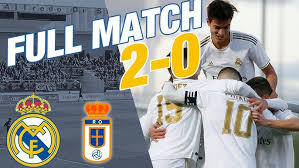
9. Oviedo vs Madrid in the Modern Era
With Oviedo currently in the Segunda División, fixtures with Madrid are rare. But in preseason friendlies, youth tournaments, or hypothetical Copa del Rey matchups, the excitement remains. Fans in Asturias dream of a competitive Real Oviedo – Real Madrid La Liga clash in the near future.
10. Cultural and Symbolic Significance
This matchup symbolizes the two faces of Spanish football:
- Real Madrid: The global brand, embodying success, money, and stardom.
- Real Oviedo: A working-class club that represents loyalty, resilience, and regional identity.
When they meet, it’s not just about football—it’s about Spanish culture, heritage, and the eternal romance of underdog vs giant.
11. Looking Ahead
- For Oviedo: Promotion to La Liga remains the priority, and facing Madrid regularly would be a dream for the next generation of fans.
- For Madrid: Matches against historic clubs like Oviedo are reminders of Spanish football’s depth.
- For Fans: The Real Oviedo – Real Madrid story embodies why football captivates hearts worldwide.
13. Season-by-Season Highlights: Oviedo vs Madrid
While not as frequent as the Clasico or Madrid vs Atlético, the Real Oviedo – Real Madrid clashes across La Liga history gave fans memorable stories. Here are some key moments decade by decade:
1930s–1940s: The Early Encounters
- Oviedo established itself as a strong competitor in the Primera División. Facing Madrid was a test of tactical discipline, and many games were hard-fought affairs despite Madrid’s superior squad.
- Oviedo’s compact defense frustrated Los Blancos, and several games ended in low-scoring draws, which were celebrated like victories in Asturias.
1950s–1960s: Madrid’s European Glory, Oviedo’s Fight for Survival
- While Real Madrid dominated Europe with Alfredo Di Stéfano, Puskás, and Gento, Oviedo struggled to keep up.
- The gulf in resources was clear, but home games in Oviedo were still fiercely contested, with the Carlos Tartiere crowd making Madrid uncomfortable.
1980s–1990s: Oviedo’s Golden Era
- The 1980s and early 1990s saw Real Oviedo in one of their strongest periods, consistently competing in La Liga.
- Their most famous result came in 1991, when Oviedo beat Madrid 3–1 at the Carlos Tartiere. This remains one of the most talked-about games in Oviedo’s modern history.
- Players like Carlos Muñoz and Jokanović became symbols of the club’s fighting spirit.
2000s–2010s: Absence and Longing
- Oviedo’s financial collapse in 2003 saw them relegated not only from La Liga but to the depths of Spanish football.
- For more than a decade, Oviedo fans could only dream of facing Real Madrid again in competitive fixtures.
- Friendly games and occasional Copa del Rey matchups kept the dream alive, but Madrid focused on their galácticos era with Zidane, Ronaldo, and Beckham.
14. Fernando Hierro: The Oviedo-Madrid Connection
Perhaps the most symbolic link between the clubs is Fernando Hierro.
- Early Career at Oviedo: Hierro began his professional journey with Real Oviedo, impressing with his defensive strength and leadership.
- Move to Real Madrid: In 1989, Madrid signed Hierro, and he went on to become one of the greatest defenders in football history.
- Legacy: Hierro’s rise from Oviedo to Madrid is a story of opportunity—how Oviedo provided the platform for a player who became a Real Madrid and Spain legend.
This connection remains a point of pride for Oviedo fans and symbolizes how smaller clubs contribute to the greatness of giants.
15. Tactics Through the Years
The tactical approaches of Real Madrid and Real Oviedo have evolved differently.
Real Madrid’s Tactical Evolution
- 1950s–60s: Attacking football with Di Stéfano and Puskás, overwhelming opponents with creativity.
- 1980s–90s: “La Quinta del Buitre” era with a fluid midfield and counter-attacks.
- 2000s–2020s: The Galácticos and later the Champions League dynasty under Zidane relied on possession, pace on the wings, and midfield control.
Real Oviedo’s Tactical Identity
- Defensive Solidity: Oviedo often set up compactly against bigger sides.
- Counter-Attacking Play: Quick transitions defined their approach against Madrid.
- Modern Era: In the Segunda División, Oviedo plays with grit, prioritizing set-pieces and collective strength.
When these two styles clash, Madrid typically dominates possession, while Oviedo thrives on moments of opportunism.
16. Copa del Rey Drama
The Copa del Rey has historically been a stage where underdogs like Oviedo dream of upsetting giants.
- Matches between Oviedo and Madrid in the cup often carried more drama than league fixtures.
- For Oviedo fans, eliminating Madrid—even in a single leg—would rank among the greatest achievements in club history.
- Although Madrid usually advanced, Oviedo’s performances in the Copa reflected their spirit and refusal to be overshadowed.
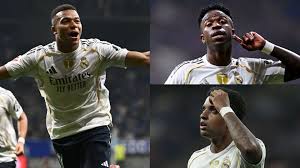
17. The Stadiums: Bernabéu and Carlos Tartiere
Stadiums are more than structures—they are temples of football.
- Santiago Bernabéu: Madrid’s iconic home symbolizes power and prestige. For Oviedo players, stepping onto its turf was both intimidating and inspiring.
- Carlos Tartiere: Named after a former club president, this stadium is the heart of Oviedo’s identity. When Madrid visited, the atmosphere was electric, with fans treating it like a festival.
The contrast between the two stadiums reflects the contrast between the clubs: global dominance versus regional pride.
18. The Role of Asturias in Spanish Football
Asturias, where Oviedo is based, has a proud football culture. The region may not boast the resources of Madrid or Catalonia, but it has produced top talents.
- Players like David Villa, Santi Cazorla, and Juan Mata hail from Asturias.
- Oviedo embodies Asturian resilience, fighting against financial odds.
- When facing Real Madrid, Oviedo carries not only club pride but the spirit of an entire region.
19. Real Oviedo’s Revival Story
Perhaps one of the most inspirational stories in Spanish football is Real Oviedo’s revival.
- In the early 2000s, the club faced bankruptcy and demotion to Spain’s fourth tier.
- Fans worldwide bought shares to save the club. Even players like Mata, Cazorla, and Michu invested.
- This global solidarity turned Oviedo into a symbol of football’s community spirit.
Today, Oviedo is back in the Segunda División, with aspirations of returning to La Liga and facing Real Madrid once again.
20. The Rivalry in Perspective
It’s important to note that Real Oviedo – Real Madrid is not a “rivalry” in the traditional sense like El Clásico. Instead, it represents:
- David vs Goliath: A proud regional club testing itself against the greatest.
- History: Oviedo’s golden moments against Madrid live on in memory.
- Romance of Football: The possibility that, on any given day, the underdog can prevail.
For Oviedo fans, beating Madrid is not just about three points—it’s about dignity and pride.
21. Fan Culture: Chants, Songs, and Atmosphere
The fans define the experience.
- Oviedo Fans: Known for passionate chants like “¡Hala Oviedo!” and displays of blue flags filling Carlos Tartiere. Matches against Madrid amplify this passion.
- Madrid Fans: Wherever they travel, Madridistas bring expectation. Their chants of “¡Hala Madrid!” often clash with the local pride of Oviedo.
- Atmosphere: In Oviedo, games against Madrid are carnival-like, uniting the city behind the team.
22. Predictions for the Future
- If Oviedo Returns to La Liga: Spanish football would gain back an historic club and a fixture that many older fans remember fondly.
- For Madrid: Facing Oviedo again would add another layer to their domestic dominance and connect them with Spanish football heritage.
- For Fans: The next Real Oviedo – Real Madrid game would symbolize Oviedo’s resilience and Madrid’s continued greatness.
23. Symbolism Beyond Football
This matchup is about more than the game:
- Madrid represents the modern, globalized, commercial side of football.
- Oviedo represents the traditional, community-based, romantic side of the sport.
- Together, their story highlights the diversity and depth of Spanish football.
24. Conclusion: The Magic of Real Oviedo – Real Madrid
The history of Real Oviedo vs Real Madrid may not be filled with hundreds of matches, but it is filled with meaning. Every encounter represents:
- A clash of scales—global giant vs regional fighter
- A clash of histories—Madrid’s dominance vs Oviedo’s resilience
- A clash of dreams—Asturian pride vs Spanish and European glory
Whenever these two clubs meet again, it will not just be a football match. It will be a celebration of Spain’s footballing heritage, the survival of underdogs, and the enduring appeal of the beautiful game.
